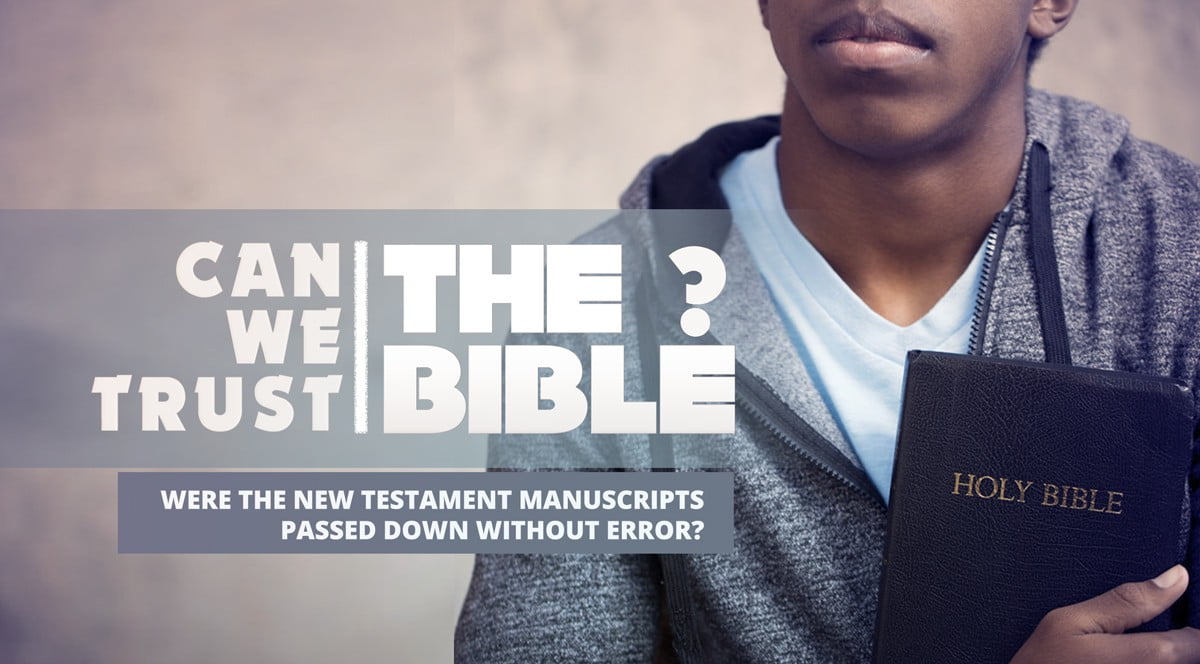
The final question to respond to today is as follows: Is the translation of the New Testament we have today a word-for-word copy of the original manuscripts written between 45 and 95AD or has it been changed over time? Can we start with the bad news first? The original manuscripts (as was the case with the Old Testament) are no longer available to us and likely did not survive decades after their composition. But the good news again: we’ve got copies, and lots of them! How many you ask? 5,700 Greek New Testament manuscripts are still in existence today! And these aren’t far removed from when the books were originally written; in fact, 10 to 15 of them were written within the first 100 years after the book of Revelation. They are all fragmentary it’s true, but they do cover large portions of the Gospels and Paul’s letters. By 200AD there are 48 copies, fragmentary but comprising the vast majority of the New Testament. And before 400AD, a total of 99 manuscripts exist today, including oldest complete copy of the New Testament called the CODEX SINAITICUS.
The Bible you hold today has faithfully translated the New Testament from a critical Greek copy (Novum Testamentum Graece ~ 1516AD) based on all known manuscripts (ex. Codex Sinaiticus etc)! Though this is neat, the Greek manuscripts don’t tell the whole story. You see, the New Testament was translated early on into many languages including Latin, Coptic, Syriac, and Arabic; and so, all told, there are between 20,000 and 25,000 handwritten copies of the NT in all languages! Now if that is not enough evidence for you, hear this: even if all of these manuscripts were destroyed, did you know the New Testament could still be reproduced almost in its entirety by the quotations of it in non-biblical sources like sermons and commentaries written by early church leaders? There are over a million known non- biblical quotations of the New Testament from the first few centuries!
Just so we grasp how strong the manuscript evidence is for the New Testament, see how it lines up against other undisputed historical books from the same time period: Available manuscripts
This is what is known as an “Embarrassment of Riches!” Christian, do not fear the history professor or critic in your circle. There is more historical evidence to trust the record of the New Testament than to believe figures such as Alexander the Great or Caesar Augustus ever existed! Which leads us to the final desperate argument the critic has left to throw at you: “Even if you Christians have so many manuscripts of the New Testament, do you really expect me to believe that all those manuscripts are identical? If there is even one difference in 2 manuscripts, how can you know that what you have in your Bible is true and not an error? How do you explain John 7:53-8:11?”
Well, the simple and honest answer is yes, there are differences! But before you become disheartened, allow common sense to comfort you: with so many manuscripts, this is to be expected! The key to this question is not becoming discouraged by the truth, but going one step further to delineate what those differences actually are…and they fall into 4 categories as follows:
- Spelling and non-sense errors: the largest group of manuscript variants including the +/- of the greek letter “n”; this error is easy to spot and correct, example: a apple versus a(n) apple
- Minor changes that do not affect translation: the second largest group of variants, example: Barnabas versus “the” Barnabas
- Meaningful changes that are not viable or plausible: the third largest group of variants, example in 1 Thessalonians 2v9: “gospel of God” is found in all the early manuscripts of this book, versus “gospel of Christ” is found in only one later manuscript
- Meaningful changes that ARE viable: <1% of all variants, example in Romans 5v1: “we have peace” (echomen) versus “let us have peace” (echomen)
The 2 biggest meaningful and viable variants in the New Testament are 2 passages not found in the earliest copies: Mark 16:9-20 (disciples pick up serpents/drink poison after the resurrection) and John 7:53-8:11 (woman caught in adultery/Jesus writes in the sand). Though it may be hard to part with these passages, we must recognize that neither of these variants changes any core belief of Christianity! Furthermore (and this is the most reassuring fact), ALL textual variants are noted in the footnotes of your faithful English translation! In sum, over 99% of the words of the New Testament you read today can be trusted as exact copies of God’s original writing! And within that 1% of variants: all are known, nothing is secret, and not one of them changes any essential truth Christians stake their lives on in faith!
And with that, here we have arrived: God is the most reasonable explanation for the universe, the Old Testament timeline is not out of keeping with secular history, and the Bible (both Old and New Testaments) can be trusted as written by God, complete, and preserved over centuries from corruption…God’s very words in your hands!




Leave A Comment